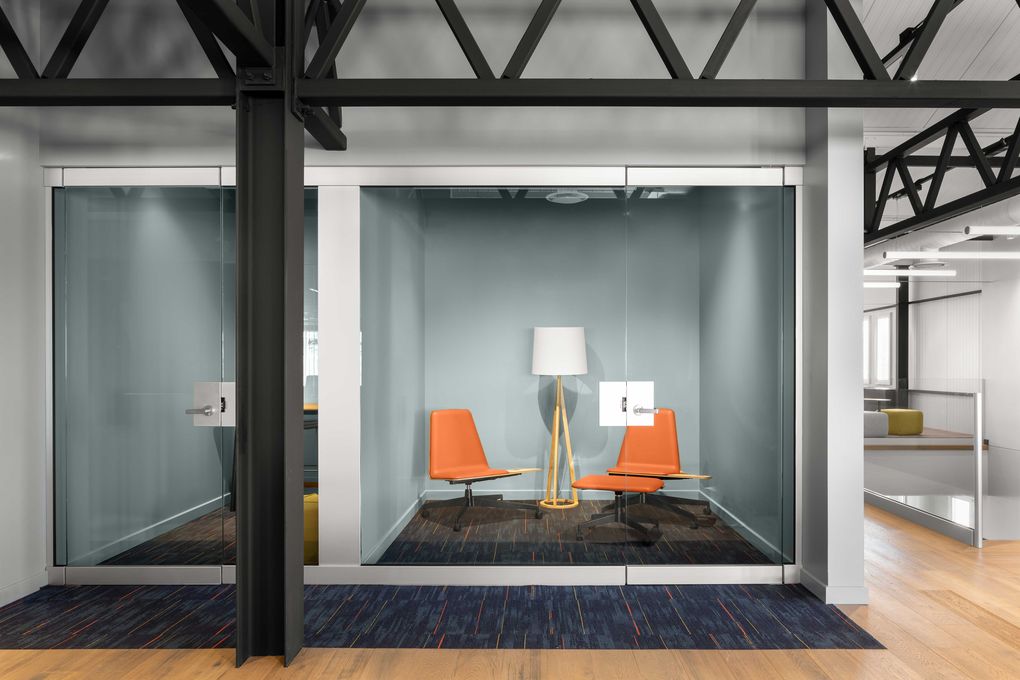As a home for a family of four, the house I designed for myself is my pride and joy. But now, as a home office, its inadequacies have become glaringly apparent. For a phone call, the acoustics aren’t ideal; voices collide with the daily cacophony of kids. The lighting for video calls could be more flattering. Electrical sockets are suddenly not in the right place. From these less-than-ideal headquarters, I continue to lead Linebox Studio as senior architect. But actually, I’m grateful for the chance to review and renew lessons about the true nature of a workplace.
One day, many of us will return to our offices. Some will continue to work from home. For those returning, it won’t be the same old office. And for those who continue to work from home, adjustments will have to be made. What defines an “office” now? How has it changed? Is every place a workplace? Working from home during the pandemic has taught us all more about what suits us best personally. What we’ve learned will inform the office we want to go back to. Beyond the health and safety protocols, masses of questions have been raised from our collective stints as at-home workers. What is a desk? Do we need one?
One tenet that has been central to our design philosophy will never change: comfort and character are key. Comfort allows us to do our best work, while character connects us to the space. That comfort comes in a variety of forms.
A balance of spaces and opportunities for the needs of both introverts and extroverts will be important. Flexible spaces that can adapt to myriad needs will determine success. Staff can take harbour in one spot; at the same time, there are many spaces that encourage socialization and all-important chance encounters.

This idea is perfectly exemplified in our design of Ottawa’s Shopify Laurier office. The wall nook is unique but purpose-driven, offering quiet and solitude. The chosen materials mellow the acoustics perfectly for folks who want to tuck away. Careful attention to lighting creates mood, maintains alertness, and defines each space. The net result is a space that recalls the most appropriate elements of home.
On the flip side, some people need to work in the presence of others. For Element AI in Montreal, we designed an espresso and kombucha bar that embodies the spirit of the local coffee shop. After all, work isn’t performed in a vacuum nor simply just when you’re at the keyboard. Everywhere is a workspace. Here, it isn’t just the bar but also the seating in and around the space. People want to come to the office to see one another.

Also at Element is the popular library: also referred to as “the church,” it’s housed — very literally — in a peak-roofed volume with built-in bookcases; it is a nod to the “church of knowledge” and also reflects the flavour of their Mile End neighbourhood, where about a dozen churches are visible from the office views. Here, the office becomes a continuum of its surroundings and a reminder of the roots of the brand.
For Klipfolio, we designed the kitchen to invite broad interaction. Staff aren’t squeezed into a small space — a prerequisite for the post-COVID pandemic office. The elements of home are all visible — plants, nice furniture, and natural light. It’s a clean-lined office space with pops of colour that add energy. People want to be there.

Pre-COVID, we designed an enviable home office. Natural light comes in through deliberate window placement. Office supplies are hidden by clever storage. There’s a whiteboard, which is actually the back of a Murphy bed.

Houses, condos, and rental units will, without doubt, need to respond to the future of working from home. This might be the “new space” that never really got the attention it deserved. Flexibility is important, since square footage is at a premium for most. Rugs, high ceilings, and natural materials assume acoustic qualities.
At its essence, an office has to invoke a feeling of ownership. The greatest function of a building is how it allows us to inter- act with one another. This is a luxury that just a short time ago, we took for granted.
